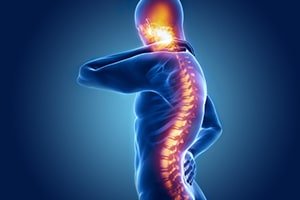
Whiplash is a neck injury due to forceful, rapid back-and-forth movement of the neck, like the cracking of a whip.
Whiplash is commonly caused by rear-end car accidents. But whiplash can also result from sports accidents, physical abuse and other types of traumas, such as a fall. Whiplash may be called a neck sprain or strain, but these terms also include other types of neck injuries.
Most people with whiplash get better within a few weeks by following a treatment plan that includes pain medication and exercise.
However, some people have chronic neck pain and other long-lasting complications.Symptoms

spinal cord injury — damage to any part of the spinal cord or nerves at the end of the spinal canal (cauda equina) — often causes permanent changes in strength, sensation and other body functions below the site of the injury.
If you've recently experienced a spinal cord injury, it might seem like every aspect of your life has been affected. You might feel the effects of your injury mentally, emotionally and socially.
Symptoms
Illustration showing the area of the body affected by paraplegia and quadriplegia
Spinal cord injuriesOpen pop-up dialog box
Your ability to control your limbs after a spinal cord injury depends on two factors: the place of the injury along your spinal cord and the severity of injury to the spinal cord.

Osteoporotic fractures are a result of osteoporosis, a condition in which the bones become more fragile due to bone deterioration or low bone mass. Bones that are weaker or more fragile are at greater risk for fractures. Fractures occur commonly in the spine. Bone loss can occur without any symptoms, until the fracture actually occurs. Osteoporotic fractures can arise with minimal trauma, such as a strain, bump or fall. In individuals with osteoporosis,a fracture can be caused by even a minor fall or during routine activities, such as twisting and bending. Typically, significant back pain along the spine is experienced after a fracture happens.